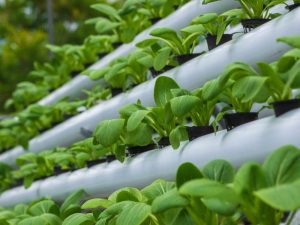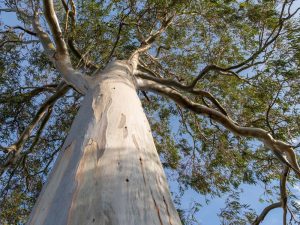Last Updated on August 10, 2023 by teamobn
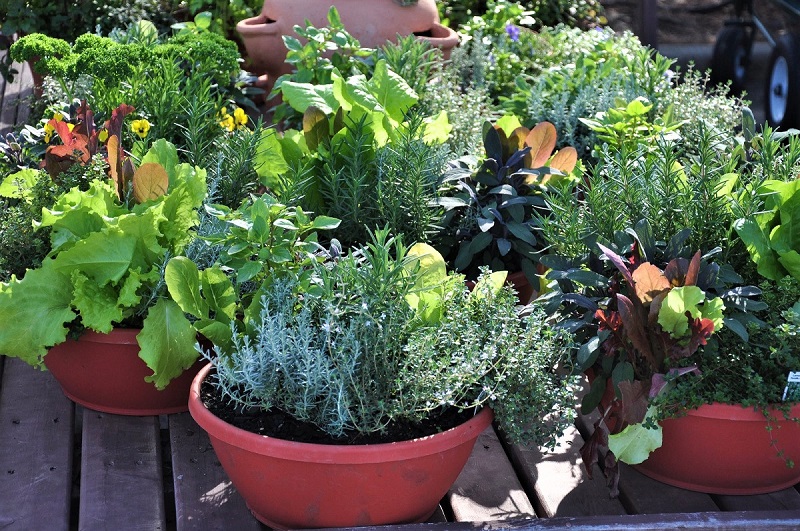
Container gardening is among the quickest and most dramatic fixes to dull spaces.
HOPELESSNESS is probably the most delightful thing about an insultingly small outdoor space. When your backyard is so small that its main feature is an empty packet of M&M’s blown in from next door, humility tempers your expectations. You try, in fact, to push that part of your home out of your mind. You avoid visiting it almost as much as you avoid a weekend with the in-laws. Even then, you leave as quickly as possible.
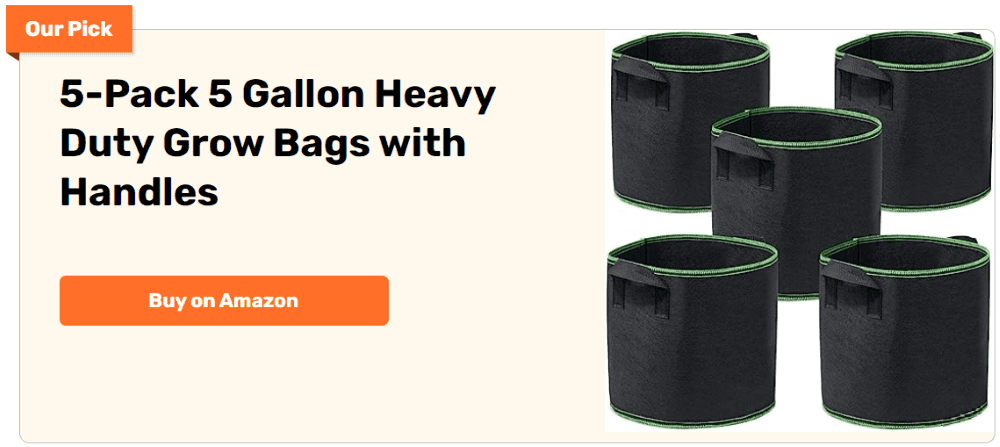
We say all this is delightful because, in such cramped, wholly unremarkable spaces, even the tiniest change will make a big difference. And container gardening is among the quickest and most dramatic fixes.
Why Start Container Gardening?
Contents
Cunningly arranged, lushly planted containers bring the joy of gardening to the smallest of corners. In larger areas, landscape professionals will often use container gardening to bring sparkle to gardens dulled by the heat of high summer.
Deftly arranged containers can announce an entrance. They soften corners. Sometimes, they even screen unwanted views. Imagine how much more a container garden could offer a small space.
When and What You Can Plant
Container gardening is the perfect home for flamboyant annuals and half-hardy perennials – which are sometimes called ‘patio plants.’ But you can grow just about anything when container gardening. With the right care, most shrubs, climbers, herbaceous perennials, grasses, and even trees will thrive in pots. You can grow fruits, vegetables, and roses in containers, too.
Remember, however, that plants require some time to settle into their new homes. Permanent specimens are best planted in early spring. They will establish themselves rapidly in favorable weather. Otherwise, plant these specimens between early spring and early autumn.
You can plant tender, summer-flowering plants in May after the threat of frost has passed. If you want a stand of container gardening plants to dazzle in winter, you should begin planting them in late summer or early autumn.

Choosing Appropriate Containers
Choosing appropriate containers when container gardening is another consideration altogether. If you intend to keep your containers outdoors throughout the year, choose frost-proof terracotta pots. Experienced gardeners will tell you that any other container labelled frost-resistant will likely crack during prolonged cold spells.
Imitation terracotta containers – often made from plastic or fiber glass – are practical. They are lightweight and so you can easily move them indoors if gets too cold out.
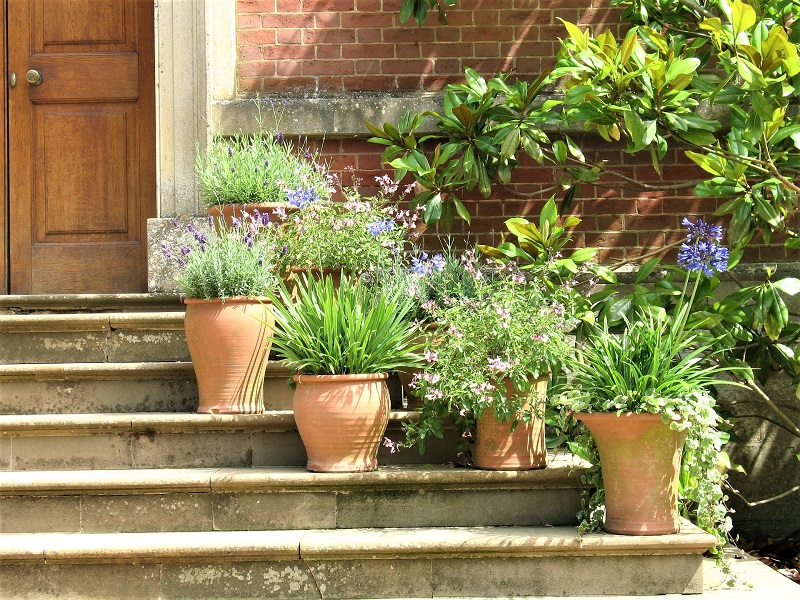
Large or Small Containers?
Choose containers that are at least large enough to hold the roots of single specimens. Small pots dry out quickly. If you intend to grow a number of plants in one container, then a large trough will facilitate more convenient watering.
You should, however, avoid potting slow-growing plants with small root balls into large containers. The excess compost can easily become waterlogged. That can lead to root rot and death. Instead, increase the pot one size at a time as the plant grows.
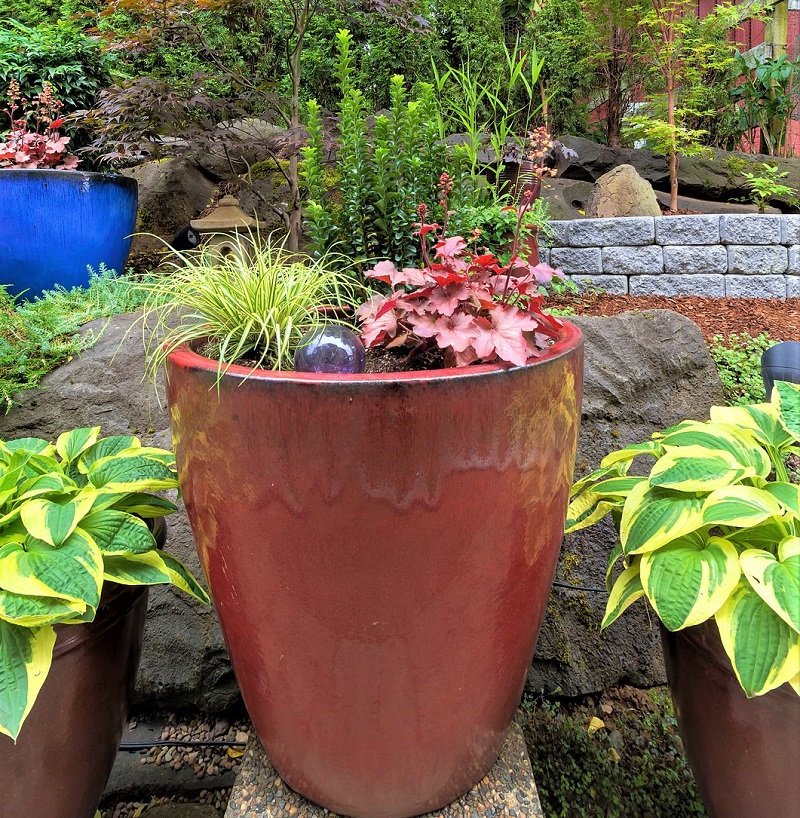
Ensuring Adequate Drainage
You need to ensure adequate drainage for your container plants, as well. Choose only those pots with drainage holes of sufficient size and number at the base. Drill extra holes at the bottom of the pot if necessary. Where potting media might be washed out of the container, place drainage material over the holes. You can use stones or broken terracotta pieces for this.
Be sure to use just enough drainage material for proper flow. Too many stones or terracotta crocks will impede the growth of roots. If possible, raise the container on small blocks or bricks to guard against the accumulation of surplus water.
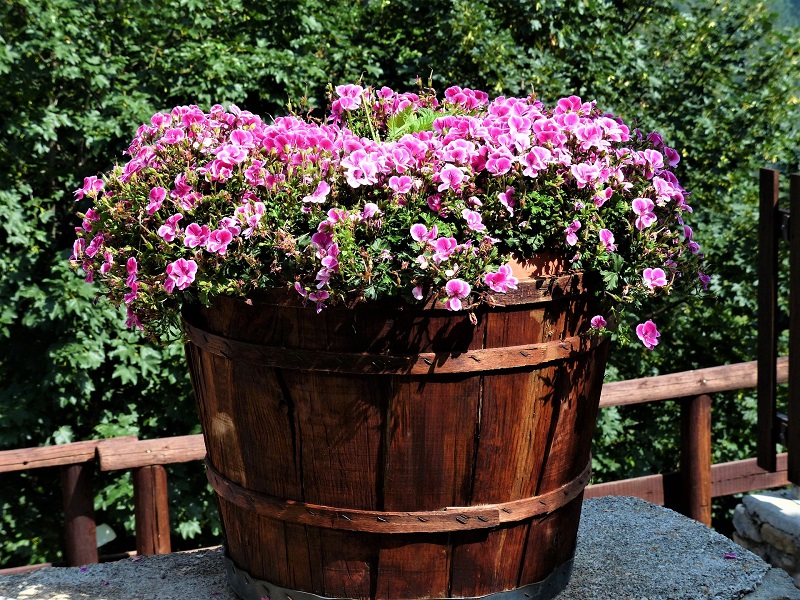
Choosing a Potting Medium
Container gardening is no more difficult than planting in-ground, in the soil of a garden, but there are a few differences. Container gardening plants and seedlings thrive best when they start out in a free-draining, sterile medium. That’s why a good potting mix is a “soil-less” combination of peat or coir, pine bark, and vermiculite or perlite.
Good potting mediums are also designed to stay airy. They do not dry out too quickly but will resist compacting so that the plant’s roots can absorb water, air, and moisture. A quick visit to the garden center will tell you that there are specific mixtures for succulents, orchids, roses, acid-loving plants, and seed-starting. Do some research and choose the appropriate mix for your plants.

How to Plant in Containers
Once you have selected the appropriate potting medium, you can turn your attention to planting. Here is a basic guide.
- Fill the container with the potting mix, leaving room to arrange the plants on the surface. Make sure to allow a one-inch gap between the soil level and the top of the container. This will ensure room for water to soak into the medium.
- Carefully remove the plants from their pots, teasing out the roots gently. Settle the plant into the medium, making sure that the roots hang freely. No part of the roots should bend at the bottom.
- Ensure that the top of the root ball is level with the surface of the potting mix. Firm the soil around the plants, tamping it down lightly with your fingers.
- Water well. The soil may recede after planting and watering. Check and add new soil if necessary. This will help prevent any harmful root exposure.

Now, all that may sound like a lot of tedious research and work. But within a month or two, after weeks of pleasure, the effort you expend on your container gardening journey will be but a memory.
You will find, too, that a healthy, vigorous container garden is preferable to an empty packet of M&M’s.



